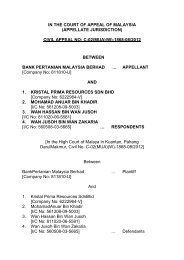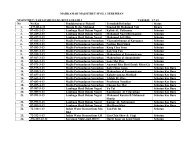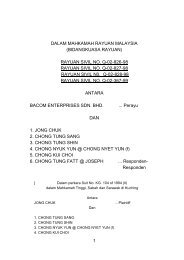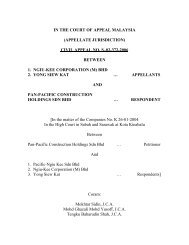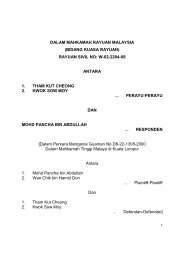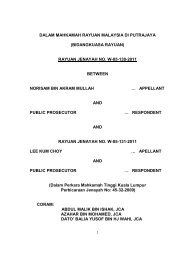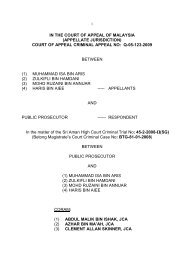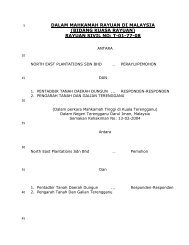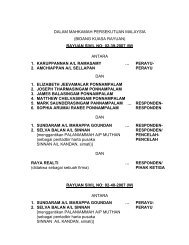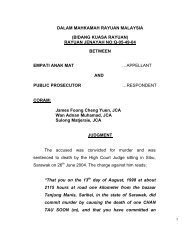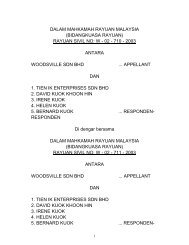THE PALACE OF JUSTICE CIVIL APPEAL NO. P-02-2074-2011 ...
THE PALACE OF JUSTICE CIVIL APPEAL NO. P-02-2074-2011 ...
THE PALACE OF JUSTICE CIVIL APPEAL NO. P-02-2074-2011 ...
You also want an ePaper? Increase the reach of your titles
YUMPU automatically turns print PDFs into web optimized ePapers that Google loves.
expressed the judicial policy element in determining the existence of<br />
a duty of care in the following terms:<br />
So in determining whether or not a duty of care of particular scope was<br />
incumbent upon a defendant it is material to take into consideration<br />
whether it is just and reasonable that it should be so.<br />
In the early 1990s, there were further attempts by Judges of the<br />
House of Lords to formulate a general principle by which to determine<br />
the existence of a duty of care. For instance, in Smith v Eric S Bush<br />
[1990] 1 AC 831 (HL(E)) Lord Griffiths enunciated a test based on (i)<br />
foreseeability; (ii) proximity; and (iii) justice and reasonableness.<br />
In the House of Lords case of Caparo Industries Plc v Dickman (a<br />
case that we have mentioned earlier) Lord Bridge of Harwich<br />
summarized the principle on duty of care as follows:<br />
What emerges is that, in addition to the foreseeability of damage,<br />
necessary ingredients in any situation giving rise to a duty of care are that<br />
there should exist between the party owing the duty and the party to whom<br />
it is owed a relationship characterized by the law as one of ‘proximity’ or<br />
34



